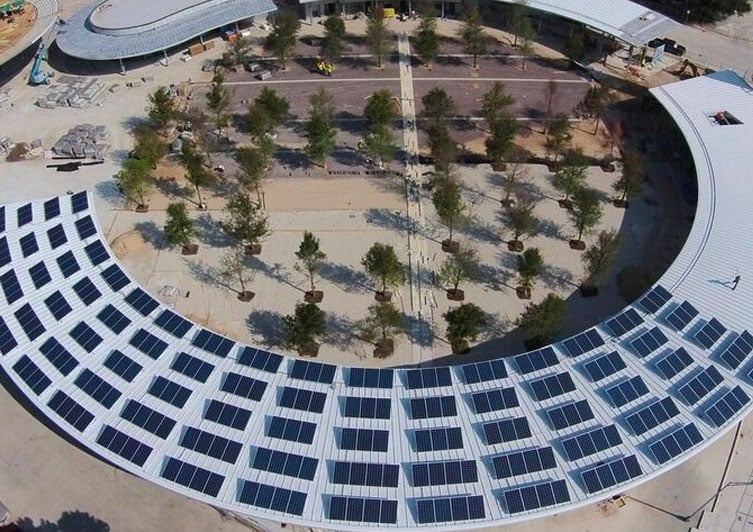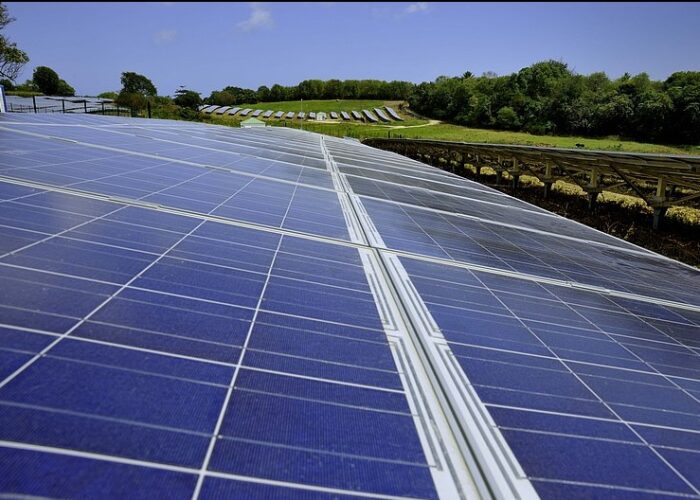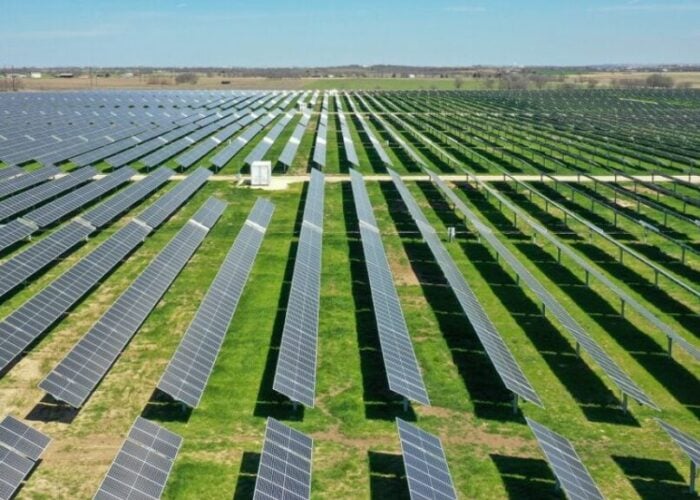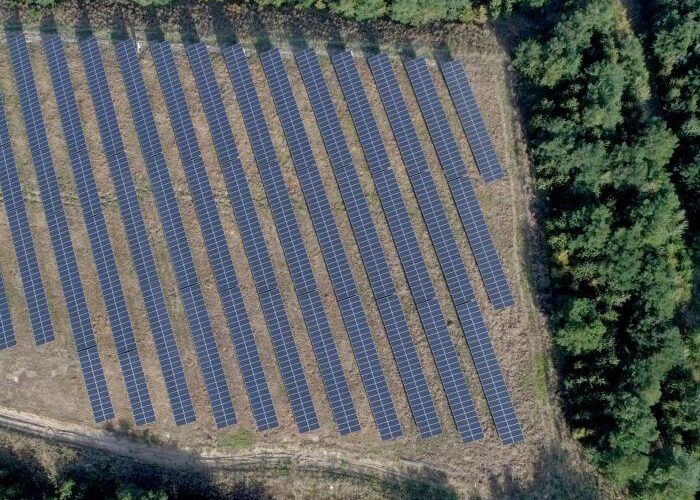
PV Tech Premium Editor JP Casey looks at the balancing act legislators in Texas face when considering grid reliability and the ratio of the different methods to generate power in the US state.
From the state government’s own figures, Texas leads all US states in energy production and consumption, and in 2021, the state produced the most energy in the country, accounting for 43% of the US’ total oil production, and one-quarter of its gas output.
Unlock unlimited access for 12 whole months of distinctive global analysis
Photovoltaics International is now included.
- Regular insight and analysis of the industry’s biggest developments
- In-depth interviews with the industry’s leading figures
- Unlimited digital access to the PV Tech Power journal catalogue
- Unlimited digital access to the Photovoltaics International journal catalogue
- Access to more than 1,000 technical papers
- Discounts on Solar Media’s portfolio of events, in-person and virtual
Yet this is not to say that Texas is entirely reliant on fossil fuels. Indeed in 2021, the state was the largest producer of wind power in the US, accounting for 26% of the country’s total wind production, and in 2022 ranked second among all states in solar production, behind only California. Critically, the Solar Energy Industries Association (SEIA), the trade body representing solar developers in the US, projects that the state’s solar capacity will grow by 34.3GW over the next five years, the most of any US state.
Part of the SEIA’s optimism stems from the standing of renewable power in general, and solar power in particular, in the US. The US Office of Energy Efficiency and Renewable Energy reports that by the end of 2022, there were 110GW of photovoltaic installations alone in the US, and the SEIA notes that the country’s solar pipeline contains more than 99GW of additional capacity in large-scale projects alone, to say nothing of the residential and commercial rooftop solar projects under construction.
Much of this development has come in the wake of the Inflation Reduction Act (IRA). The SEIA reports that the incentives covered by the IRA will lead to the US installing 69% more solar capacity by 2032 than if the IRA had not been implemented, and the Act has largely been hailed as a vital step facilitating the realignment of the US energy mix.
Yet tying together the renewable power incentives proposed on the federal level and the significant solar potential in Texas on a state level has proven challenging. While these bills were not passed by the Texas legislature, House Bill 3707 and Senate Bill 624 threatened to impose more arduous permitting requirements for new solar farms, and retroactively apply higher standards of billing and permitting to existing projects, moves that might have discouraged new solar investment, and made existing projects less profitable.
The episode has highlighted the influence that a legislative body can have over an area’s energy mix. Yet while much of Texas remains eager to invest in solar and live up to the state’s considerable potential, the state’s permitting framework has worked to ensure a balanced, reliable grid that prioritises access to energy over the growth of any particular power source.
The lawmakers’ delicate balancing act is a clear indicator that, regardless of an area’s climatic conditions or existing power infrastructure, it is the permitting and regulatory process that can ultimately have the greatest impact over an area’s energy mix.
The legal landscape
While Texas lawmakers did not pass House Bill 3707 and Senate Bill 624 into law, they did approve Senate Bill 2627, which sets a new legal framework for Texas’ energy grid as a whole. The bill creates a new body, the Texas Energy Fund, to which power companies can apply for loans for the construction, maintenance and upgrading of energy facilities.
The fund is only available to companies whose work is connected to the grid operated by the Electric Reliability Council of Texas (ERCOT), which covers 90% of the state and, crucially, is open to so-called ‘dispatchable’ forms of power, such as coal, oil and gas. With this US$10 billion fund set to provide funding for fossil fuel generation, the emphasis of the Texas legislature is on ensuring reliable power, regardless of source.
“The legislature had a desire to increase the amount of dispatchable generation on the grid, however, renewable generation will continue to be a key piece of the ERCOT portfolio,” says Tonya Miller, executive director of the Texas Solar Power Association (TSPA). “There is a need for all types of generation on the ERCOT grid; we support the development of all resources, though prefer policies that advance generation in a technology-agnostic manner.”
Miller’s idea of an agnostic permitting framework aligns with the permitting framework in which power generation as a whole is encouraged, rather than electricity derived from a single source. This is reflected in the very mix of Texas’ energy grid, with ERCOT reporting that 42% of the state’s energy comes from natural gas, but that wind and nuclear account for 24% and 10% of power, respectively, in this very diverse grid.
When asked if the current legislation encourages new solar power developments, Winston P Skinner, a lawyer at Texas law rm Vinson & Elkins, agrees: “I would say by and large, yes.”
“Currently, there’s not a whole lot in the way of permitting for solar projects in particular,” adds Skinner. “There were several different legislative proposals that the Texas Legislature debated in this past regular session, which ended in late May … the Texas Senate passed a version [of a bill to extend the boundaries of permits], the Texas House did not really take it up.”
The bill that Skinner refers to would have significantly changed the power facility permitting process in the state. Under the current law, a company aiming to build a renewable energy project must deliver notice to all people living within 500 feet of the perimeter of the project, but this bill would have increased this range to 25 miles, making the award of new permits considerably more challenging.
Setting a precedent
Of course, this hands-off approach to delivering specific legislation can create challenges for relatively new forms of electricity generation. If the laws are broad enough to encourage business as usual, anything that deviates from that default state of affairs will face additional obstacles to implementation.
“When Texas enacted some of its renewable-friendly legislation, it was mostly aimed at wind energy, which had a lot more precedent in the state,” says Skinner, pointing out that, even within renewables, there are discrepancies with regard to how well-established, and consequently how straightforward, it can be to get new projects off the ground. “That was drawing on the known quantity, the known entity at that time, which was really more wind power in Texas than solar power.”
This impacts of this hands-off approach are evident in Texas’ energy mix over the last decade. In 2012, according to ERCOT, natural gas facilities in the grid generated 123,335GWh of power, compared to 29,803GWh of wind power and just 123GWh of solar, as shown in the graph below.
In 2015, the year in which the Paris Agreement was signed, the EIA heralded Texas for generating just 9.9% of its power from wind, less than half of its current contribution to power in the state, reflecting the slow pace of renewables adoption in Texas in earlier years.
“Certainly, as solar has come to dominate the interconnection queue within ERCOT, which oversees the intrastate electric grid, a lot more attention is being paid to solar now,” adds Skinner.
However, the fact remains that the relatively unproven nature of solar power, in a state where the legislation does not encourage development of any particular kind of power, means that each new solar project is helping to set a precedent. Solar power in Texas has few guidelines to follow, either from legislative direction or historical precedent, but this is something that may well change in the future.
“Sometimes you see proposals that are attempting to govern something in a wholly new way, and then sometimes you see proposals that are really more aimed at drawing on and extending the legal framework that already exists for similar types of infrastructure,” says Skinner.
Challenges beyond permitting
A lack of historical precedent for solar power in the state and a hands-off legislative body are not the only challenges facing solar in Texas.
“One is the landowner concerns, given the siting requirements for solar power, but also for wind power,” says Skinner. “That burden, if you will, often falls on more rural areas, because they have the space to accommodate those types of installations … the shoe’s on the other foot [where] more urban areas are generally more solicitous of renewable power.”
The discrepancy between rural solar power generation and urban solar power consumption is visually striking. The largest solar plant under construction in Texas is Invenergy’s 1.6GW Samson Solar Energy Center, with close to quadruple the capacity of the state’s largest operating facility, the 497MW Roadrunner Solar Farm. This mammoth project will be built in the rural north-east of the state, between the cities of Bogata and Deport, which have a combined population of 1,629.
Much of the power from this project, which is expected to come online this year, will be sold to a number of corporations with heavy presences in major cities, including AT&T, McDonald’s and Honda. This contrast can lead to, as Skinner puts it, “a rural-versus-urban dynamic at play, in terms of the dissatisfaction with renewable energy”.
In addition, the recent Texas heat wave has exposed vulnerabilities within the state’s energy grid, with ERCOT struggling to meet unprecedented demand for electricity to power devices such as air conditioners. Skinner pointed to Winter Storm Yuri, which hit the state in February 2021 and froze considerable amounts of power infrastructure, as exemplifying the same problem, despite the radical differences in climatic conditions, that Texas’ energy grid has recently struggled to compensate during extreme weather events.
Any push to dramatically add solar capacity to the grid, therefore, is unlikely to be perceived as an act that adds stability and security to the network, considering the challenges the grid is already facing.
Ensuring balance
Yet new legislation, or at least new legislative approaches, could alleviate some of these challenges. Indeed, a change in perception of legislation, from a series of obstacles to clear in order to build a project, to a series of incentives and encouragements to develop solar power, could change the future of Texan energy.
When asked about the role and work of the government in regulating the state’s solar power, Miller is eager to stress that: “Texas has been, and continues to be, a private property rights state.”
“The failed passage of [House Bill 3707 and Senate Bill 624] is a strong indicator of the continued protection of those rights,” Miller continues. “Currently, Texas does not have these unnecessary and overly burdensome permitting requirements on the renewable sector, therefore we can expect solar projects to continue to move forward in Texas. This is extremely important given the increase in load at peak times when solar is abundant.”
This balanced approach could also encourage investment in other aspects of the solar industry, with Skinner pointing to solar-plus-storage projects and improved battery facilities as relatively new technologies that could benefit from this approach to permitting.
“As the storage technologies improve, as the duration of that storage output can be increased … I think that as well can shift the narrative in terms of how reliable that technology can be and whether it’s standalone or whether it’s paired with renewable projects,” says Skinner. According to the EIA, of the 20.8GW of utility-scale battery storage capacity that companies plan to build in the US between 2022 and 2025, 7.9GW will be built in Texas, more than in any other state.
Yet in the same manner that this balance does not discourage solar permitting and construction, it does not actively encourage it. Indeed, considerable effort from the private sector has been necessary to submit applications for new power projects, with the three largest operational solar projects in the state all being privately-owned, and the continued support of the private sector will be integral to ensuring solar generation makes the most of this permitting framework.
Building a resilient network
Ultimately, the state legislature has considerable sway over the energy mix of Texas. The desire of the state’s legislature to create a balanced, open-ended permitting structure, where all manner of projects and facilities can be proposed and constructed, is ultimately to create a resilient grid. Part of this motivation stems from the fact that, as the production figures demonstrate, Texas is a solar power leader among US states, and could meet much more of its power demands with domestic renewables than many other parts of the country.
“I think, in the legislature’s view and the in the state leadership’s view, the more that we can rely on ourselves and the less we have to rely on [solely] the wind [or] on the sun, the better,” says Skinner. Should the forecast improvements in Texas’ battery storage capacity take place, it is possible that any reputation solar power may have developed as being unreliable, or reliant on external factors, will fade.
Skinner’s comments also suggest that, for at least a portion of the Texas lawmakers, the principle of self-reliance is of equal or greater importance than the practical concerns of grid connectivity. This is reflected in that Texas does not use power generated elsewhere in the US, and Skinner suggests that this principle is a point of pride for many in the state.
“The ERCOT grid, the intrastate Texas electric grid, is more self-reliant than grids in other areas of the country where there’s more interconnections between neighbouring states,” Skinner says. “Texas obviously prides itself on its independence in a lot of different ways, and this is certainly one of those sources of pride and something that’s been very jealously guarded for decades. I do see that as continuing.”
Ultimately, then, both the priorities of the Texas solar power sector, and the priorities of the state’s lawmakers, are aligned: to build an energy framework that can reliably provide power and is free from legislation that could needlessly impede or make di‑cult permitting.
Such a framework means that, while any power source can succeed in Texas, the responsibility for delivering large-scale solar in particular is likely to fall on private investors, technological innovators and individual companies, with the state satisfied as long as the grid remains reliable.
As Skinner surmises: “All of this has been done in the name of grid reliability, and so dispatchability has really become the buzzword and the policy end that the legislature seeking to [deliver].”







